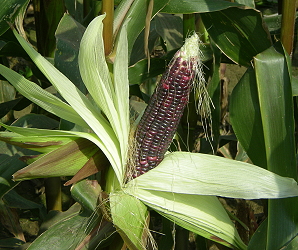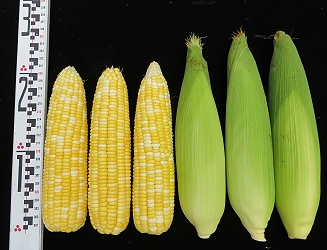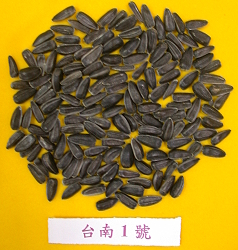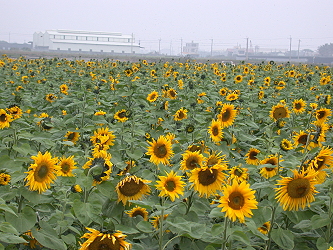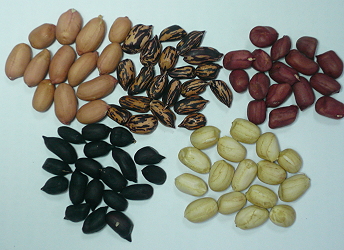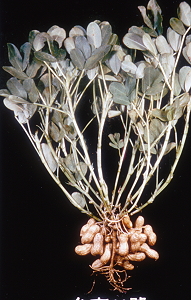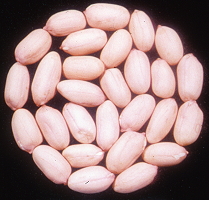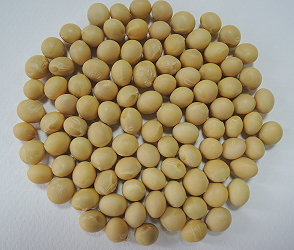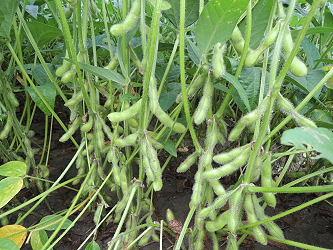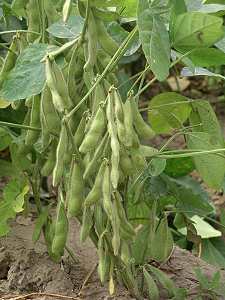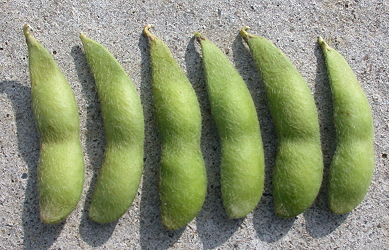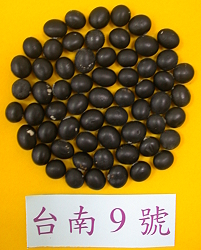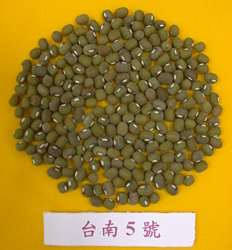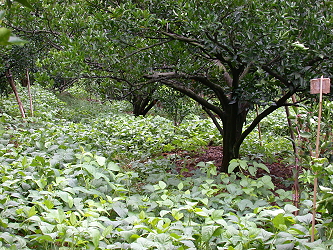Dryland Crops
Dryland Crops
Potzu Branch Station conducts research on hybrid corn for feed, table use and silage. The station has released several feed-type corn hybrids. Tainan #5, released in 1960, is early and uniform maturing, and suitable for baby corn production. Tainan #11, released in 1971, is resistant to downy mildew and early maturing. Tainan #16, released in 1984, is medium maturing, downy mildew resistant and drought-tolerant. Tainan #20, released in 1998, and Tainan #24, released in 2009, are medium-late maturing and high yielding with resistance to downy mildew, rust and viral diseases, as well as lodging. They are suitable for mechanical harvesting.
Super sweet corn hybrid Tainan #18, released in 1990, and Tainan #26, released in 2011, are high-yielding with good eating quality, resistance to leaf blight, and heat-tolerant. They are suitable for year-round production. Yellow-white bi-colors sweet corn Tainan #27, released in 2013, is heat-tolerant, high-yielding with good eating quality, resistance to diseases, and suitable to plant in summer.
White corn Tainan #22, released in 2000, has uniform plant height, and the plant height is shorter than the native variety. The fresh ear has uniform kernels and shape. It also has a thin pericarp with good flavor. White Glutinous corn Tainan #23, released in 2007, has strong stalk and disease resistance. The yield of fresh ears with husk is about 13.5 t/ha, with good eating quality. Black Glutinous corn Tainan #25, released in 2010, has high yield and a strong stalk.
Silage corn hybrids Tainan #19 and #21, released in 1993 and 1999, respectively, are high yielding and nutritious. Being resistant to downy mildew, viruses, rust and lodging, they are suitable for cultivation in the district. They can be mechanically harvested.
|
|
|
|
|
|
|
|
|
| F2 hybrid sunflower Tainan Selection #1, released in 1982, can be used as an oil crop or for landscape green manure purposes. |
|
| Seasame Tainan #1, released in 1992, has a seed yield potential of more than 1 t/ha, and is suitable for both spring and fall plantings. It is high in oil (50%), which has a gragrant, tasty flavor.. |
|
Peanut is an important dryland crop in Taiwan. Tainan Selection #9, released in 1966, has stable yield, high shelling percentage and good flavor after processing because of its high oil content. Tainan #10, released in 1976, has high oil content (57%). Tainan #11, released in 1986, is a large-seeded early maturing variety with short stalk and potential for high yield. Tainan #12, released in 1993, is early maturing, tolerant to leaf diseases, and suitable for processing into frozen peanut products. Tainan #13 and #14 were both released in 1998. Tainan #13 has a thick and large shell, and so is suitable for mechanical harvesting and for baking or processing in the shell. Tainan #14 is a large-seeded variety, suitable for fresh boiling or steaming for direct consumption. Currently it is a leading variety in Taiwan. Tainan #15, released in 2008, is a large-seeded variety, tolerant to leaf diseases, and is suitable for direct consumption. Tainan #16 and #17 were both released in 2009. Tainan #16 has a black seed coat and is suitable for direct consumption. Tainan #17 has a purple-mottled seed coat and is suitable for boiling or steaming for direct consumption. Large-seeded variety Tainan #18, released in 2012, has a shallow netted shell, is resistant to rust and suitable for baking in the shell.
|
|
|
|
|
|
In cooperation with AVRDC-The World Vegetable Center, the Station has released two soybean varieties: Tainan Selection #1 in 1986 and Tainan #2 in 1993. These two determinate varieties are high yielding, early maturing, resistant to lodging, and suitable for mechanical harvesting. In addition, Tainan #2 is resistant to downy mildew, rust, and bacterial pustule. Soybean Tainan #10, released in 2013, has yellow skin and cotyledons, high yield, high protein content, and resists powdery mildew, which is ideal for the making of soybean milk and tofu.
|
|
|
Vegetable soybean Tainan Selection #1, released in 2003, has good flavor, high sugar and isoflavones content, and high percentage of grade pod yield. Vegetable soybean Tainan ASVEG #2, released in 2005, has high yield potential, good flavor and green pods. Black soybean variety Tainan #3, released in 1998, has small seeds with green cotyledons, high yield potential and good quality, and is suitable for mechanical harvesting.
|
|
|
Black soybean variety Tainan #5, released in 1999, has large seeds, yellow cotyledons, stable yield, and high protein content, which is ideal for the making of soybean sauce. Black soybean Tainan #8 and Tainan #9 were released in 2009. Tainan #8 has large seeds with yellow cotyledons, resists powdery mildew, has high protein and isoflavones content, and is suitable for sweetened bean or healthy food production. Tainan #9 has large seeds with yellow cotyledons, is resistant to diseases, and can be used for organic farming.
|
|
|
|
A shiny-seeded mungbean variety, Tainan Selection #3, was released in 1981. It gives high yields with uniform flowering and pod-maturing. The dull-seeded mungbean Tainan #5, released in 1989, has all the merits of Tainan #3, and also is short-stalked, resistant to powdery mildew and lodging, and is suitable for mechanical harvesting and processing.
Recent research focuses on breeding soybean for use as green manure or cover crop on fallowed fields. Varieties Tainan #4, #6 and #7 were released for these purposes. Green manure soybean variety Tainan #7, released in 2002, is fast growing with high biomass, extensive field coverage, and tolerance to cold and drought. It is an ideal green manure crop for rain-fed cropping systems..




